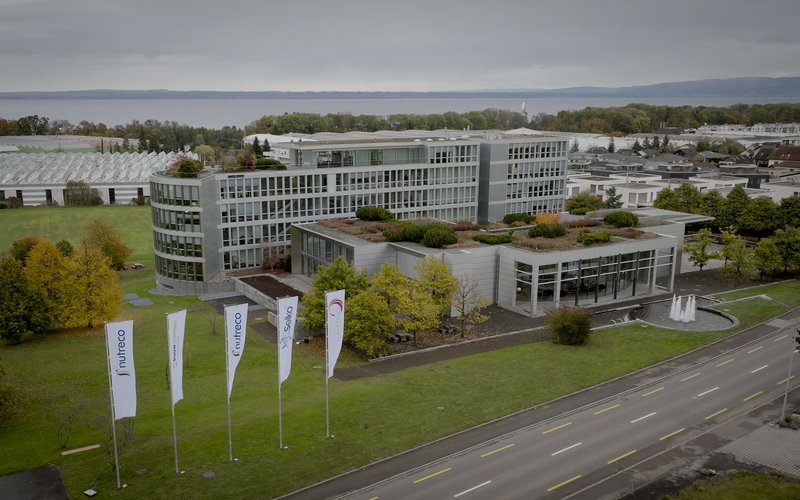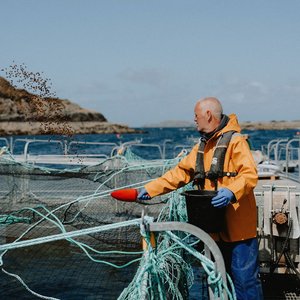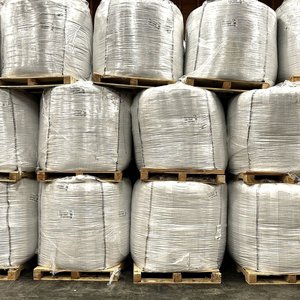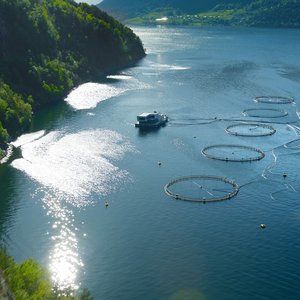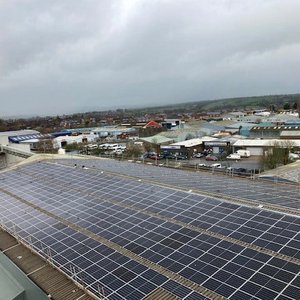Nutreco is building a new center in Switzerland for medicinal plant solutions, called Nutreco's Garden of the Future. This groundbreaking facility will be the hub for the Phytotechnology team and gather its activities under one roof, from discovery work and experimental cultivation plots to plant development and plant production. Nutreco’s Garden of the Future will be a very unique asset, unlike anything in the industry today. The center will be led by Bernd Büter, director of the Phytotechnology Program and Nutreco's Garden of the Future.
PhytoComplexes
The work being done at the discovery facility will focus on creating PhytoComplexes: plants or plant metabolites that, when added to feed, have physiological impacts that consistently support the resilience, performance and welfare of aquatic species and farm animals.
Phytogenics boomed in recent decades in response to the need to remove antibiotic growth promoters from feed, leading even skeptics to accept their value. “Today there is scientific evidence and practitioner acceptance of the benefits to animal performance of, for example, dietary additions of essential oils,” said Nutreco’s chief science officer, David Bravo. However, he said these products were mostly selected for their antimicrobial effect.
PhytoComplexes are different because they are not trying to kill pathogens; they trigger a systemic response that could lead to, for example, decreased inflammation or increased nutrient absorption, improving the production performance of the animal. “We are talking about a very specific, complex combination of active molecules in a particular plant that can defeat complex problems, such as the inflammation farmed animals produce in reaction to their environments,” Bravo explained.
A mindset shift
Emma Wall, Nutreco’s exploration’s director of Development and Deployment, is a physiologist by training and has spent her whole career in the livestock botanical space. In her current role, Wall and her team focus on maintaining a strong connection between Nutreco’s business lines, Trouw Nutrition and Skretting, and the Nutreco Exploration team, to help ensure the solutions precisely fit the needs of farmers. This is only one of many things that makes Nutreco Exploration’s approach to PhytoComplexes very different from anything seen in the industry to date; it’s unique not only in terms of the development process, which veers away from traditional R&D to focus solely on business needs but also the science, which, according to Emma, required an important mindset shift.
Traditionally, the phytotechnology industry has mainly taken a pharmaceutical approach to product development, only utilizing extractions that could be completely isolated and identified. Products were often made up of synthetic chemicals; for example, instead of using the essential oil of cinnamon, companies would use synthetic cinnamaldehyde. “This approach required knowing exactly which chemical was responsible for the effect produced – and it trivialized the power of traditional medicine,” said Wall. “What we’re producing at Nutreco Exploration is always a complex, never a single ingredient. Our PhytoComplexes use the whole plant or complete plant extract, fully utilizing the amazing power of nature to help animals overcome the complex challenges they face today.”
This approach required Wall and some of the other experts on the team to shift their mindset. “We had to train ourselves to really respect nature,” said Wall. “These compounds are put together in plants for a reason – when you start taking them apart, you lose bioefficacy. So, we’re trying to not only respect the observation of what we see in these plants but also respect that they’re meant to be together.”
“We don’t just build a PhytoComplex around a certain species of a plant, we identify one specific plant with the right genotype to solve a problem. That’s the level of technology we are talking about. We can look at 1,000 plants from the same species and only one has the right genotype to tackle the problem,” Bravo said. “We are able to identify the genotype of a plant with the right phenotype, and then propagate it ourselves using modern technology – so the whole process is under our control.”
Close to farmers’ needs
The company is confident that customers will see how effective its approach is when they start to use these products because the PhytoComplexes are totally different from traditional phytotechnology – they work by improving an animal’s systems to boost its resilience. The Nutreco Exploration team looks at the weak points in an animal, such as gut integrity or inflammation, and figures out how a PhytoComplex hits those targets.
The Nutreco Exploration team only works on projects that fit existing business needs and address specific challenges – never on concepts that may be interesting but have no business accountability. “One might come to us with a vague idea of a problem they need to have solved, and after multiple conversations to understand more, they start working with our phytochemists to get down to a molecular level,” Wall said. The team is a powerhouse of expertise, with people who have 10-30-years of expertise in phytotechnology.
“The Nutreco Exploration team is our empowerment tool for our two business lines. The team couldn’t exist without this business connection,” said Wall. “We’re not replacing our R&D teams, we want to empower them throughout the product development process with knowledge, tools and these PhytoComplexes that can help them address customers’ issues in new and exciting ways. Our business lines continue to own the product and the trials. We involve them in the discovery phase as soon as we have a positive result. This unique approach creates value for livestock and aquatic species, for our customers, and for us.”
The grand opening of the facility will take place in spring 2024.


